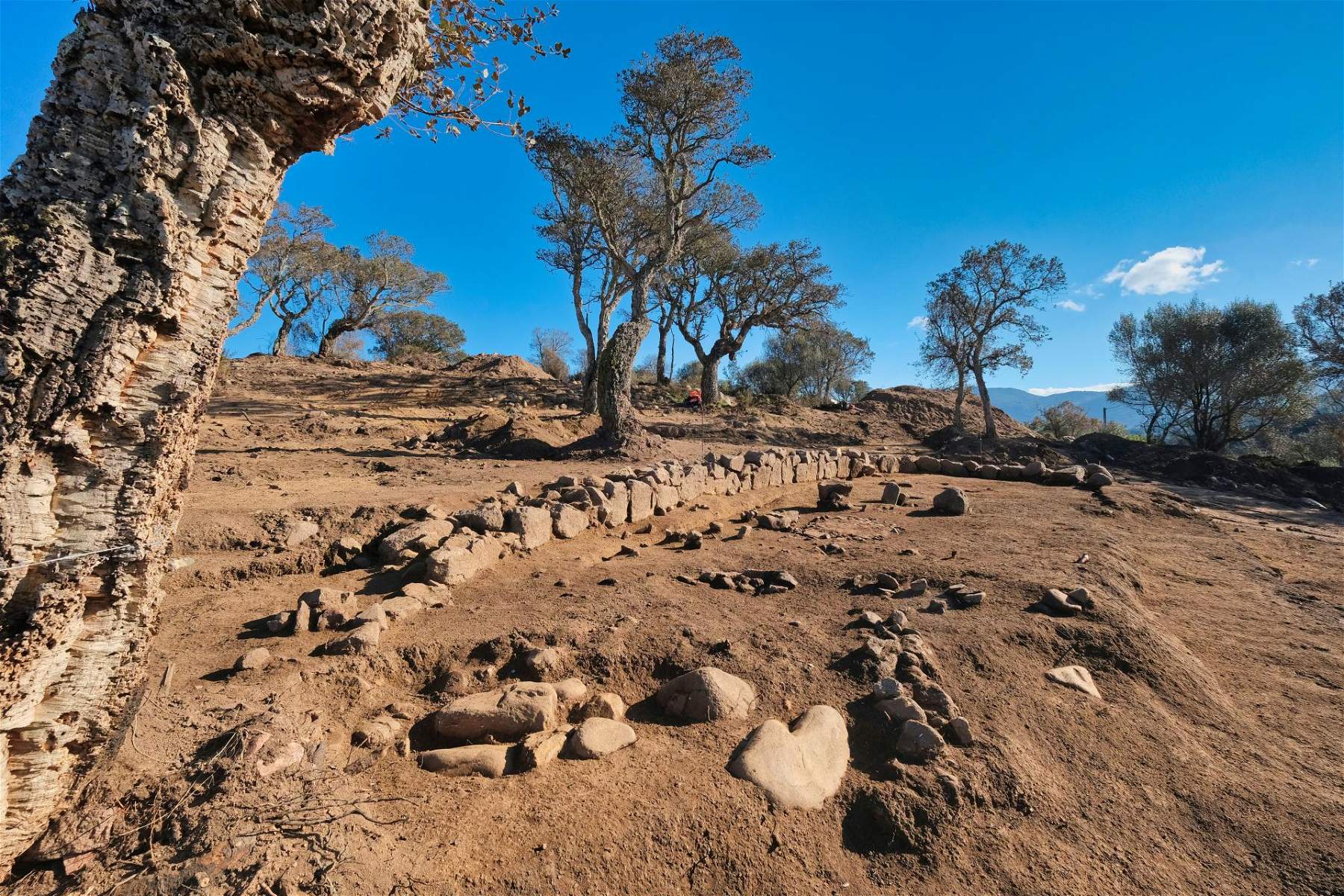Corsica, discovered an exceptionally well-preserved Bronze Age village
In Corsica, archaeologists from theInstitut National de Recherches Archéologiques Préventives (INRAP, “National Institute of Preventive Archaeological Research”) discovered near the town of Sartena in the southwest of the island the remains of an “exceptionally well-preserved” (so INRAP) Bronze Age village.
The village is located on a hill overlooking the left bank of the Rizzanesi River in the lower part of its middle valley, a few kilometers west of its mouth in the Gulf of Valincu, the most important bay in southwestern Corsica. The site, which is located near the menhirs of “U Frati è a Sora” (“the brother and sister” in the Corsican language), was excavated between November 2019 and January 2020, prior to the construction of a residential complex. Archaeologists discovered a fortified village covering the area of about one hectare and including an estimated dozen dwellings.
The archaeological research revealed a succession of enclosure works placed mainly on the southern slope of the hill, the most vulnerable; on the other, steeper slopes, traces of defenses of lesser proportions were found. Scholars have estimated that in the Early Bronze Age (c. 2000-1800 B.C.), the village was protected by several rows of palisades. These structures were later dismantled and replaced by a ditch, triangular in cross-section, which was perhaps further defended by an embankment with in turn a palisade erected above it. Around the beginning of the Middle Bronze Age (1500 B.C.), a double drystone wall was erected.
The remains of dwellings were also found at the site, which were very well preserved and provided a wealth of information, INRAP researchers explain. The discovery of the traces on which the roof rafters had been installed as well as the discovery of the longitudinal connection beams, allowed us to understand how the interior space of the houses was structured. The latter were divided into three rooms and bordered by a dry-stone masonry foundation, and covered an area of about 50 square meters. The study also showed that some houses were built entirely of wood.
Finally, information on the livelihood of this community was also obtained: it was observed that the village’s economy was based on the cultivation of grains in the surrounding area, acorn harvesting, and livestock. Meats were then smoked to be stored for several months. Granaries and large pots buried in the ground were used to store these products. Craft activities were also practiced in the village, evidenced by the finding of metal objects and the presence of ornaments materialized from discrete metallurgy and the presence of jewelry and stone vessels. “These discoveries,” INRAP notes, “offer new insights into the daily life of people in Corsica two thousand years before our era.”
Pictured is a view of the remains of the village. Photo by Pascal Druelle
 |
| Corsica, discovered an exceptionally well-preserved Bronze Age village |
Warning: the translation into English of the original Italian article was created using automatic tools. We undertake to review all articles, but we do not guarantee the total absence of inaccuracies in the translation due to the program. You can find the original by clicking on the ITA button. If you find any mistake,please contact us.




























